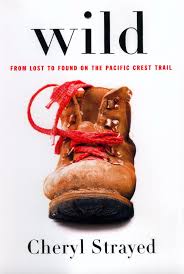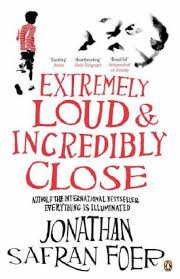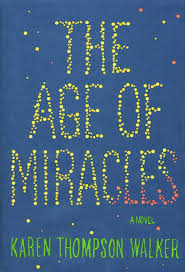David Mitchell
Random House
![]()
|
You & I, the moneyed, the privileged, the fortunate, shall not fare so badly in this world, provided our luck holds. What of it if our consciences itch? Why undermine the dominance of our race, our gunships, our heritage & our legacy? Why fight the natural (oh, weaselly word!) order of things?
Why? Because of this:--one fine day, a purely predatory world shall consume itself. Yes, the Devil shall take the hindmost until the foremost is the hindmost. In an individual, selfishness uglifies the soul; for the human species, selfishness is extinction.
from Cloud Atlas
|
Souls bumping into each other across time
Cloud Atlas is an impressive book that was made into an impressive film. Worthy companion pieces, each can stand alone, yet each enhances and magnifies its artistic counterpart. I finished the novel at 11:00 on a Saturday night and saw the film on Sunday, which immediately sent me back into the book.
In his 2004 novel, David Mitchell (The Thousand Autumns of Jacob de Zoet, Black Swan Green) tells six different yet interconnected stories, mixing genres and styles as he does so. There is a 19th century journal of a passenger on a sailing ship; letters from a young composer working with a master; a modern day thriller about the nuclear industry; a comically outlandish narrative of being confined in a care institution; a science fiction tale about a humanoid “fabricant” discovering her humanity; and a post-apocalyptic fantasy written in a unique dialect (“Oh, bein’ young ain’t easy ‘cos ev’rythin’ you’re puzzlin’n’anxin’ you’re puzzlin’n’anxin’ it for the first time.”)
As Mitchell proceeds through these different stories, set in different time periods, we find connections between them that leave the reader with a sense of awe, as if we had turned over the fabric of time and can see the way the individual threads have been woven together.
Cloud Atlas, the film, is creatively faithful to the book. Lana and Andy Wachowski (The Matrix) adapted Mitchell’s novel and co-directed the film with Tom Tykwer (Run, Lola, Run.) The result has “Oscar” written all over it, in part because of the caliber of its actors (Tom Hanks, Halle Berry, Hugo Weaving, Jim Broadbent, Jim Sturgess, Ben Wishaw, Susan Sarandon, Hugh Grant), but also because the Wachowskis stretch the film beyond its filmic conventions, just as Mitchell did with the novel.
One can see the Oscar nominations coming. Like their original Matrix, or Christopher Nolan’s more recent Inception, Cloud Atlas is a cinematic mind bender that will send viewers back a second and third time to parse and piece together its possible meanings and connections [Best Adapted Screenplay.]
The filmmakers decided to convey Mitchell’s idea of eternal recurrence and interconnectedness by having each actor assume a number of different roles, “playing souls, not characters,” explained Tykwer. Mitchell, who appears briefly in the film, has written, “each role (is) a sort of way station on that soul’s karmic journey.” It is a bit of a stretch to see lovable Tom Hanks playing a London thug; but it’s a fun stretch. It is also refreshing to see Hugh Grant playing a role other than Hugh Grant.
Part of the film’s enjoyment is trying to identify the actor behind the make-up. The actors not only play different roles, but even different genders and races—Viewers will not be surprised to learn that Halle Berry is also stunningly beautiful as a white woman [Best Make Up.]
The filmmakers chose to forgo the novel’s narrative structure of telling the stories sequentially, and instead intermixed them, which gives a dizzying sense that all these stories—in the past, the present, and the future—are occurring simultaneously [Best editing.]
And as for the acting awards, it’s tantalizing to think that Cloud Atlas could make Academy Award history if, say, Tom Hanks receives the Oscars for Best Actor and for Best Supporting Actor…in the same film.
Mitchell is a daring writer and the Wachowskis are daring filmmakers. Here is a book and film that are worthy of each other, both striking the mystic chords of our collective memory.
This review first appeared in The Columbia River Reader (November 15-December 14, 2012.) Reprinted with permission.
 Cheryl Strayed
Cheryl Strayed

 Tana French
Tana French Jonathan Safran Foer
Jonathan Safran Foer Steven Pinker
Steven Pinker Larry Colton
Larry Colton Katherine Boo
Katherine Boo Charlotte Rogan
Charlotte Rogan Gillian Flynn
Gillian Flynn Karen Thompson Walker
Karen Thompson Walker

